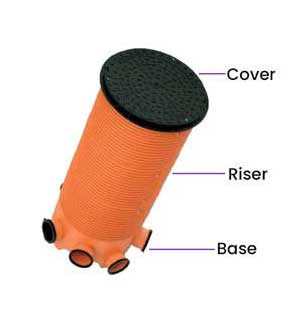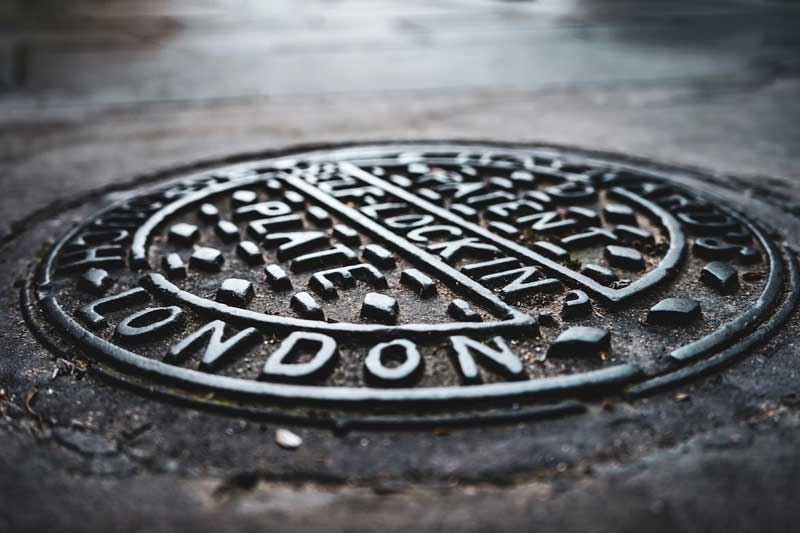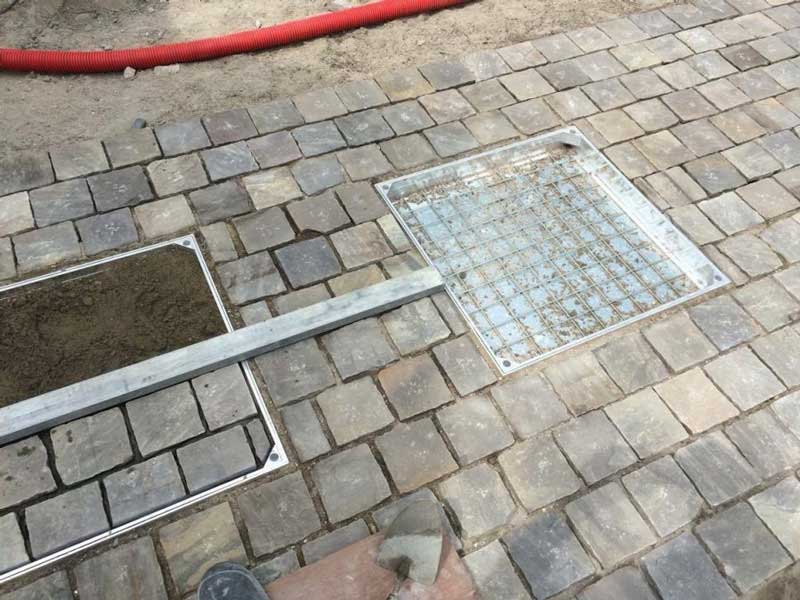New to manhole covers? No problem! Here’s your guide to everything manhole cover related. From what they are to their material, classes and more, you can find all you need to help you get the right manhole cover for your system.
Even if you’re not unfamiliar with the ins and outs of manhole covers, in our helpful guide, you can expand your knowledge on the classes and types of manhole covers to make sure you purchase a manhole cover that fits your requirements. Regardless of if the existing one is damaged or not suited to the current foot and/or vehicle traffic weight that it has been assigned, our buyer’s guide has everything you need to make a confident, informed choice.
Table of contents
- What is a manhole cover?
- Who is responsible for manhole covers?
- Can I disguise a manhole cover?
- Where can I buy manhole covers?
What is a manhole cover?
Manhole covers (sometimes known as drain covers) are a protective component, fitted over an inspection chamber. The term ‘manhole’ is a shortened version of the label ‘man-sized hole’, referring to a space where someone can fit through to enter the sewer system.
Not familiar with inspection chambers? Find out more in our guide ‘What is an inspection chamber?‘.

Why are manhole covers round?
There’s a long and short answer to this.
Short answer: They can be easier to fit over the manhole cover as they typically have a round shape. There is no need to rotate it to fit it the right way or worry about it falling down the utility access hole as it will fit neatly in place.
Long answer: It can be easily transported from place to place (rolling it across the ground being a popular option!). Additionally, they are cost-effective and efficient to manufacture when it comes to the material used because the surface area is smaller than that of a square cover with a similar width. There’s also a case that making a manhole cover round also improves the strength of the cover overall because each point on the edge is an equal distance apart from the centre of the cover.
Of course, that’s not to say that you should always pick a round manhole cover over a rectangular one. If you need a non-round manhole cover to replace an existing one, then we’ve got plenty for you to choose from in our range right here at Drainage Superstore! Take a look at what we’ve got available and find the right manhole cover for your project.
What are manhole covers for?
As the name suggests, manhole covers are manufactured to cover a manhole opening. This protects the manhole from being damaged or having anything thrown inside to clog it. It also protects those above from accidents that could occur from crossing over the manhole.
To ensure these measures are in place, they’re typically fitted down with screws or similar fittings to stop children or intruding parties from accessing the space without authorisation.
Approved Document H defines the requirements of manholes. Specifying that manhole covers for inspection chambers and manholes should be removable, non-ventilating covers made of durable material (cast iron, cast or pressed steel, precast concrete or plastic). Its strength should also be task appropriate. See “What is a manhole cover class?”
For smaller lightweight access covers, (as mentioned above) ensure these are secured with screws or similar fixings.
If a manhole cover is in a building, these should have mechanically fixed airtight covers if the drain does not have a watertight access cover of its own.
What are manhole covers made out of?
The question is not ‘What metal is used for manhole covers?’ but ‘Which metals are used for manhole covers?’. The main materials used for manhole covers are metals and are as follows:
- Aluminium
- Stainless steel
- Galvanised steel
- Cast iron
Each of the above has different qualities that are applicable for various purposes depending on where you choose to apply the cover. You can find out the properties of the metals and their suitable applications in the table below.
| Material | Properties | Best Application |
| Aluminium | Most common material for recessed covers to hold slabs, grass and tiles for aesthetic purposes. Rated up to 10 tonnes | For domestic applications where recessed covers would give best final look |
| Stainless Steel | A common choice for pedestrianized areas where occasional strength is required for delivery vehicles in town centres for example | For predominantly pedestrian areas where heavier vehicles up to 10 tonnes may occasionally, slowly travel over them |
| Galvanised Steel | Lightweight and easy to install, a versatile option for domestic or private areas with light traffic only. Rated up to 17 tonnes | Best suited to very slow moving traffic like private car parks and domestic driveways. Not for use on highways or roads |
| Cast Iron | Black in colour so best to blend in to tarmac, cast iron is the strongest material of the four, rated up to 90 tonnes | Suited to all areas but overkill in lightly trafficked or pedestrian areas. Cast iron manhole covers are allowed on highways and roads. |
Cast iron manhole covers and steel manhole covers both have different weight classes. Though cast iron follows the same system as channel drains, the weight classes of steel manhole covers are slightly different as they’re not as strong as cast iron. So, when using steel manhole covers, opt for a class higher than intended.
For specific weight explanations, you can visit our ‘Manhole cover sizes and load classes’ guide to see the differences in more depth.
You can also opt for plastic manhole covers if the area you’re installing the manhole cover is not subject to high levels of foot traffic. Just be aware their load capacity might be less than the metal alternative.

What is a manhole cover class?
The load-bearing class of a manhole cover is assigned to show the maximum weight a manhole can safely perform. It’s not a randomly selected ranking and is an essential point to consider when choosing a manhole cover to install.
The general guideline is to go for a higher class of manhole than intended if uncertain about whether the level of traffic will affect your manhole over time.
Cast Iron Manhole Cover Weight Classes
| Class | Max. weight load (tonnes) | Uses |
| A15 | 1.5 | Very light duty for pedestrian areas like gardens, patios and driveways |
| B125 | 12.5 | Domestic driveway thresholds for family cars, vans and 4x4s |
| C250 | 25 | Lightly trafficked roads and small private car parks |
| D400 | 40 | Main roads, highways and high traffic areas like public car parks |
| E600 | 60 | Industrial estates, loading bays and cargo handling yards |
| F900 | 90 | Docks and airports, extreme heavy duty applications |

Steel Manhole Cover Weight Classes
| Max. weight load (tonnes) | Uses |
| 2.5 | Very light duty for pedestrian areas like gardens, patios and driveways |
| 5 | Domestic driveway thresholds for family cars, vans and 4x4s |
| 10 | Lightly trafficked roads and small private car parks |
| 17 | Main roads, highways and high traffic areas like public car parks |
| 25 | Industrial estates, loading bays and cargo handling yards |
| 38 | Docks and airports, extreme heavy duty applications |
There are also diverse types of manhole covers, including:
- Ductile iron
- Recessed
- Solid top
Some are limited to specific classes and more commonly used in certain areas than others. You can find out more about cover classes and sizes in our guide to ‘Manhole cover sizes and load classes’.
If you are looking for a replacement manhole cover, find out what steps you need to take when buying replacement manhole covers and drain covers.
Who is responsible for manhole covers?
Manhole covers are the property owner’s responsibility when the manhole is inside the property boundary and only serves that property. If it serves other properties, you will need to contact your local utility provider (water supplier, drainage contractor etc) to check whether you or another party have responsibility.
Additionally, if you’re renting your home, your landlord or letting agent will typically be responsible for the manholes within the boundary. If you’re unsure, check with your local water supplier to confirm your responsibilities.
Can I disguise a manhole cover?
If you have a manhole installed in an area that is causing a clash with the aesthetic of the location, you have options to make the cover less conspicuous. This includes the use of a recessed manhole cover. Find out how to hide manhole covers in our guide ‘How do I disguise a manhole cover?’.

Where can I buy manhole covers?
Look no further! Drainage Superstore has you covered. We have an extensive selection for you to purchase from. From the light-duty A15 class manhole covers to the heavy-duty F900 manhole covers for applications in docks, airports and more, you can be sure to find a manhole cover that fits right into your project requirements.
If you want to know more about manhole covers, inspection chambers or other drainages, we’ve got plenty of Help and Advice to keep you informed. Check it out now! Alternatively, you can contact our friendly customer service team to help you with your queries.


























